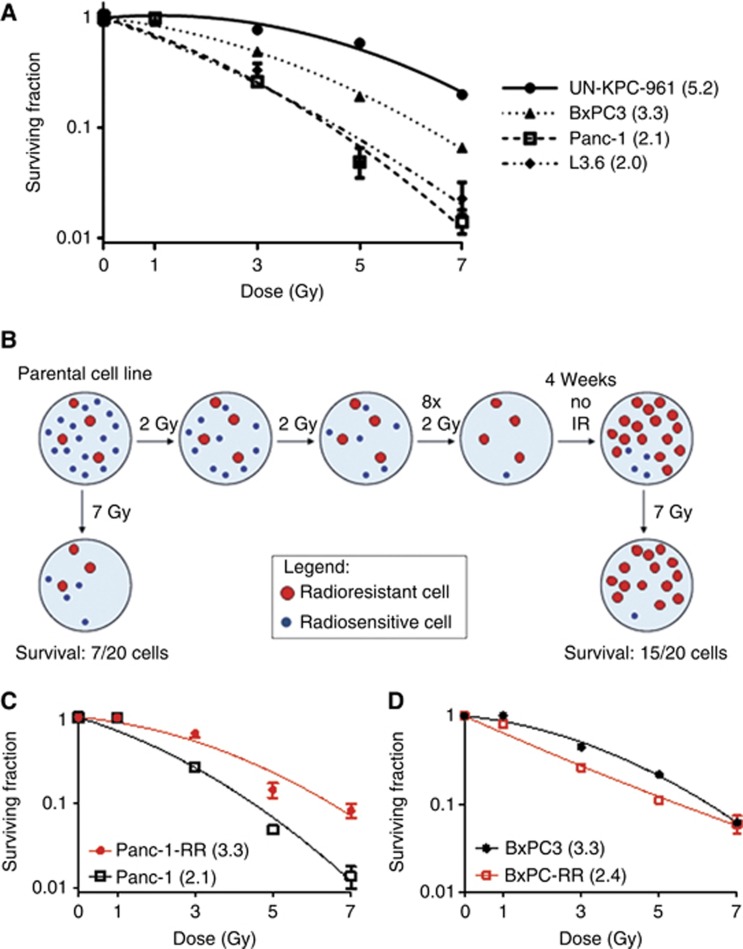Figure 1.
Response of PC cell lines to radiation and generation of radiation-resistant sublines. (A) Colony formation assays of PC cell lines exposed to the indicated dose of radiation reveal a heterogeneous response. It was observed that the immortalised human pancreatic ductal epithelial cell line (HPDE) was highly sensitive to radiation, with no colonies being observed with 2 Gy treatment (not shown). Cell line names are given with the mean inactivation dose, ( QUOTE ), given in parentheses. Mean inactivation dose has units of Gy. (B) Schematic of the generation of radiation-resistant sublines. Cell lines were exposed to 10 fractions of 2 Gy irradiation over a 2-week period and then allowed to recover. Subsequently, colony formation assays were done following exposure to varying doses of radiation to compare the sensitivity between the parental and radioresistant sublines. (C) Colony formation assay of Panc-1RR vs Panc-1. The Panc-1 subline exposed to fractionated radiation required 1.6-fold higher IR dose to elicit equivalent cell death as the parental Panc-1, and was thus referred to as radioresistant, Panc-1RR. The mean inactivation dose, ( QUOTE ), is given in parentheses. (D) Colony formation assay of BxPC3-RR vs BxPC3. No difference was observed between the naturally radioresistant parental line BxPC3 and the BxPC3 subline exposed to fractionated radiation (BxPC3-RR).

